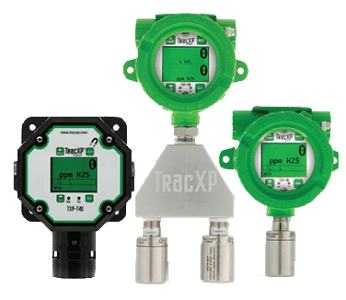If you’re someone working in an industrial setting where harmful gases are present, choosing the right type of gas detection system is essential to protect yourself from the dangerous or even life-threatening impact. Not only for yourself, but also for others working in the same place. The industrial gas detection systems can detect dangerous gases early and trigger alerts before the situation becomes unsafe.
When it comes to choosing well-designed industrial gas detection systems, two common tools named fixed gas monitors and portable gas monitors, come in. Understanding these two tools is necessary so that you know why they are essential for your workplace safety needs.
In this article, we’re going to cover the same, so stay tuned to learn how each system works.
An Introduction to Industrial Gas Detection
First and foremost, it’s essential for you to understand the process of industrial gas detection. So the process involves monitoring the presence of dangerous gases in work areas such as manufacturing plants, chemical facilities, oil and gas sites, and confined spaces. These gases can be flammable, toxic, or oxygen-depleting; therefore, detecting them quickly is essential for the safety of everyone working in the area. Additionally, early gas detection helps you avoid costly downtime due to accidents and meet workplace safety regulations.
An efficient gas detection is achieved with some advanced tools like fixed gas monitors and portable gas monitors. Most industries rely on these tools; some use one type exclusively, and others use a combination of both.
What are Fixed Gas Monitors?
Fixed gas monitors refer to devices that are installed in a specific location. They provide continuous monitoring and are ideal for areas where there’s a constant risk of harmful gases. These systems are connected to a control system that can shut down equipment when there’s a detected gas leak. They can also trigger ventilation if gas levels rise above safe limits.
The beneficial things about these monitors are that they provide 24/7 monitoring, can cover larger areas or high-risk zones and on top of that, they can integrate with building safety systems.
Where are they often placed? Near gas pipelines, processing equipment, or enclosed work areas.
What are Portable Gas Monitors?
Portable gas monitors are portable devices that workers can carry or clip to their clothing. They act as a personal safety device and are ideal for places where gas levels might vary or where fixed monitors are not installed.
The best things about them are that they are flexible and easy to move. Plus, they protect workers in different locations and are perfect for confined space entry or maintenance work.
Why does Your Industry Need Both the Monitors?
Relying on only one type of monitor might not be enough for ensuring 100% safety in the workplace. Both these monitors play different roles in making sure your workspace is secure from the exposure of harmful gases. Where fixed gas monitors provide continuous monitoring of specific areas, the portable ones protect individual workers on the move. If the industry is oil and gas, mining, chemical manufacturing, or wastewater treatment, the combination of these monitors is especially important.
How to Choose Fixed and Portable Gas Monitors for Your Industry Needs?
When choosing the right fixed and portable gas monitors, various factors should be considered. For example:
Know What Type of Gases You Need to Detect
In order to choose the right detection tools, you need to first understand which gases are present in your workplace. This is necessary because some monitors detect only specific types of gases, while others are built to detect multiple gases at once.
If your workplace deals with gases like methane, hydrogen sulphide, carbon monoxide, or oxygen depletion, choose a detector that is designed to detect them efficiently.
Review Site Conditions
If your workplace has areas that are always at risk of harmful gases, such as storage tanks or pipelines, fixed gas monitors are best to handle the exposure. At the same time, portable gas monitors are better for workers who travel between such areas. So, carefully review your site conditions and then decide where each type is needed.
Evaluate Detection Capabilities
No matter how small or large an amount of gas is present, a good industrial gas detection system should be able to detect it accurately and respond promptly to ensure safety. So, before you buy, check their detection capabilities and choose one that meets safety standards.
Easy to Use
You should be able to use detection tools without requiring any complex training. So look for devices that have simple displays, clear alarms, and require less maintenance.
Meet Safety Regulations
The primary thing you need to check is whether the monitors meet the safety standards set by your industry or local regulations. Compliance is not only essential for safety but also for avoiding legal issues.
Final Thoughts
In the end, industrial gas detection is not something to take lightly. Gas can be silent and invisible, but the dangerous impacts are real. Both fixed and portable gas monitors are best for your workplace safety, helping you detect threats early and prevent accidents before they happen.
You may also like
-
Automatic Fruit Wine Bottling Line for Small Wineries: A Complete Guide
-
How Does Plywood HSN Code Decide the GST Rate for Traders and Manufacturers?
-
POS Terminal Type: Which Is Best for Your Business?
-
Simplifying Trademark Registration in Hong Kong: What Businesses Need to Know
-
EPR Registration and Annual Returns Explained: Compliance Made Simple for Businesses

